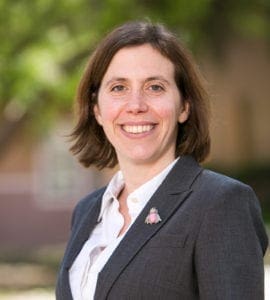
Associate Professor Mireille Jacobson
Editor’s note: Mireille Jacobson is an associate professor at the USC Leonard Davis School of Gerontology and co-director of the Aging and Cognition Program at the USC Schaeffer Center for Health Policy and Economics in Los Angeles. The column, which was coauthored with R. Sean Morrison of the Mount Sinai Health System in New York, originally appeared in STAT on March 23, 2021. An excerpt is below.
A decade ago, a team of researchers showed clearly that a new treatment for advanced lung cancer significantly improved patients’ quality of life, reduced symptoms of depression, lowered the likelihood of being admitted to the hospital for a complication of their disease, and improved survival. Subsequent research has found similar beneficial effects in other cancers and diseases.
Flash forward to today: Two-thirds of patients living with a serious illness who could benefit from this therapy don’t get it, and the majority of cancer physicians do not prescribe it despite endorsements from the American Cancer Society and the American Society of Clinical Oncology.
The treatment is not a drug or a procedure. It is palliative care: a team of specially trained doctors, nurses, social workers, and chaplains who focus on improving quality of life and reducing the disease burden for seriously ill individuals and their families. This is different than hospice — care for those who are dying, which focuses on comfort. Palliative care is provided alongside other treatments to people of any age facing serious ailments. Once engaged, a palliative team can treat pain and other distressing symptoms, address family needs, coordinate care, and provide emotional and spiritual support.
So why are such teams used so little? Like so many problems in American health care, the answer can be found by following the money. …





